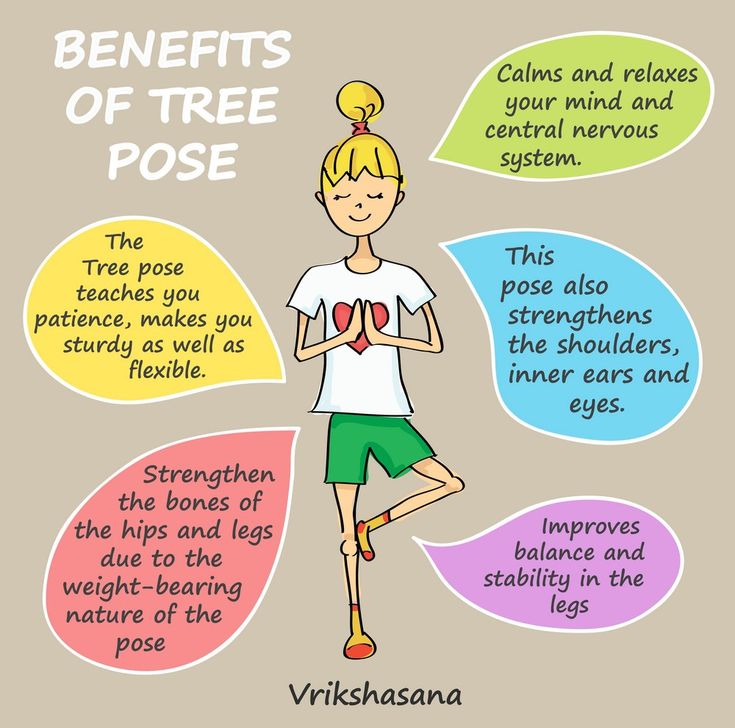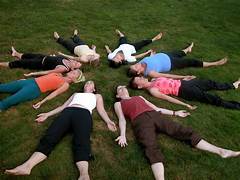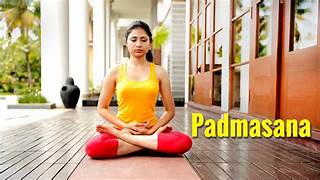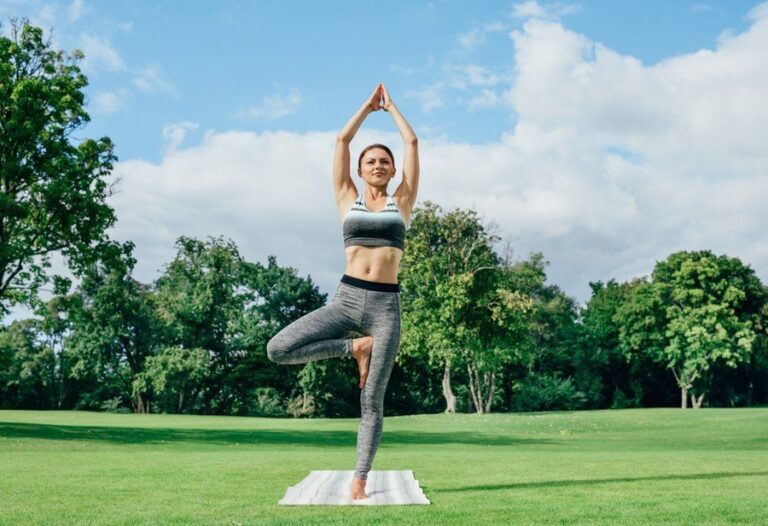Importance of yoga for students
Yoga postures for students | In our age of challenges and races, students face unbelievable pressure, and earning good grades does not alleviate it. In an environment this hectic, students need to take care of their physical and mental well-being. You will thus gain an understanding of the yoga poses that can facilitate meditation and improve your ability to focus in this article.
Due of its incredible health advantages, yoga is becoming more and more popular across the world. A new study found that 20 minutes a day of yoga practice can enhance brain function and boost concentration for daily tasks, including studying.
It is true that “yoga for concentration and memory” captures the significance of yoga in improving memory and focus. The reason for this is that yoga improves life quality in addition to physical health. As compared to aerobic activity or no exercise at all, persons who practiced yoga correctly performed better in the trial and experienced no negative side effects. Moreover, by relaxing the mind and diverting attention from outside ideas, yoga helped increase focus and concentration.
The most potent energy is focused on something. Being dissatisfied with anything makes it simple for us to feel, think, and behave unhappy as well. Students struggle to overcome this at this age. When the body and mind are relaxed, yoga encourages deeper thought.
Here, we will read about three yoga poses which are very useful in improving memory and concentration in students. let’s read about them:-
Tree pose (Vrikshasana)

The Tree Pose, known as “Vrikshasana” in Sanskrit, is a standing yoga posture that mimics the graceful and grounded nature of a tree. This pose is celebrated for its ability to enhance balance, focus, and concentration while strengthening the legs and improving posture. The Tree Pose is a fundamental asana in many yoga practices, offering both physical and mental benefits.
Please read this also Yoga for Hypertension
How to Perform Tree Pose (Vrikshasana):
- Starting Position:
- Begin in Tadasana (Mountain Pose), standing with your feet hip-width apart and arms by your sides.
- Shifting Weight:
- Shift your weight onto your left foot and lift your right foot off the ground.
- Placement of the Foot:
- Place the sole of your right foot on the inner left thigh or calf. Avoid placing the foot on the knee to protect the joint.
- Balance and Alignment:
- Find a focal point (a “drishti”) in front of you and fix your gaze to help maintain balance.
- Bring your palms together in a prayer position in front of your chest or extend your arms overhead, reaching toward the sky.
- Rooting Down:
- Press the sole of the right foot firmly into the inner thigh or calf while simultaneously pressing the inner thigh or calf against the foot.
- Engagement:
- Engage your core muscles to stabilize your spine. Relax your shoulders and keep your chest lifted.
- Breathing:
- Breathe deeply and steadily. Feel the elongation of your spine as you inhale and the grounding sensation through your standing leg.
- Switching Sides:
- Release the pose by bringing your hands back to your chest, lowering the right foot to the ground, and returning to Tadasana.
- Repeat the process on the other side.
Benefits of Tree Pose (Vrikshasana):
- Improves Balance: Tree Pose challenges and improves balance, helping to strengthen the muscles in the ankles and lower legs.
- Strengthens Leg Muscles: The standing leg in Tree Pose works to support the body’s weight, thereby toning the muscles of the thighs, calves, and buttocks.

- Enhances Focus and Concentration: The concentration required to maintain balance in this pose helps calm the mind and improve focus.
- Promotes Good Posture: Tree Pose encourages an elongated and aligned spine, promoting good posture and awareness of body alignment.
- Stimulates Circulation: The raised leg position in Tree Pose can stimulate blood flow to the pelvic region, benefiting reproductive and digestive organs.
- Increases Hip Flexibility: Regular practice of Tree Pose can contribute to increased flexibility in the hips and groin area.
- Calms the Mind: The meditative aspect of this pose, coupled with controlled breathing, helps calm the mind and alleviate stress.
Tips for Practicing Tree Pose:
- Start with a Support: Beginners can start by practicing Tree Pose near a wall or using a chair for support until they feel confident in their balance.
- Focus on a Drishti: Choose a fixed point in front of you and keep your gaze on it to aid in balance and concentration.
- Experiment with Foot Placement: Explore different placements for the raised foot, either on the inner calf or inner thigh, and find what feels most stable for you.
- Keep the Hips Square: Aim to keep your hips squared to the front rather than opening to the side to maintain proper alignment.
- Use Your Breath: Focus on deep, steady breaths to help calm the mind and support your balance.
The Tree Pose, with its symbolic representation of strength and rootedness, offers a serene and empowering experience. As you cultivate stability and balance in this pose, you may find a sense of connection to the grounding energy of nature, much like a tree firmly anchored to the earth.
Savasana(Corpse Pose)
Savasana, commonly known as Corpse Pose, is a foundational and deeply restorative yoga posture that is typically practiced at the end of a yoga session. The name “Savasana” comes from the Sanskrit words “shava,” meaning corpse, and “asana,” meaning pose. Despite its seemingly simple nature, Savasana holds great significance in the practice of yoga, serving as a crucial part of the overall experience.

How to Perform Savasana:
- Starting Position:
- Lie down on your back on a yoga mat with your legs extended and arms by your sides.
- Allow your feet to fall outward, with a natural distance between them.
- Body Alignment:
- Close your eyes and bring your attention inward.
- Adjust your body to ensure you are comfortable and your spine is in a neutral position.
- Palms Upwards:
- Extend your arms slightly away from your body with palms facing upward.
- Allow your fingers to naturally curl.
- Relaxation:
- Let go of any tension in your body. Soften your facial muscles, release tension in your shoulders, and relax your legs and feet.
- Breath Awareness:
- Shift your focus to your breath. Breathe naturally and observe the rise and fall of your chest and abdomen.
- Stillness and Surrender:
- Remain still and surrender to the pose. Allow the ground to support your body fully.
- Mindful Awareness:
- If your mind begins to wander, gently bring your focus back to your breath or the present moment.
- Duration:
- Stay in Savasana for at least 5 to 10 minutes, or longer if time allows.
Benefits of Savasana:
- Relaxation and Stress Reduction: Savasana induces a state of deep relaxation, helping to alleviate stress and tension accumulated during the practice.
- Integration of Asana Practice: It allows the body to assimilate the benefits of the preceding yoga postures, promoting a sense of wholeness.

- Restoration of Energy: Savasana rejuvenates the body and mind, providing a natural energy boost.
- Improves Sleep Quality: Regular practice of Corpse Pose can contribute to improved sleep patterns and quality of sleep.
- Mind-Body Connection: It enhances the connection between the mind and body, fostering a sense of inner awareness and mindfulness.
- Reduces Anxiety: Savasana has a calming effect on the nervous system, helping to alleviate anxiety and promote mental well-being.
Tips for Practicing Savasana:
- Complete Surrender: Release any effort or control. Allow yourself to completely surrender to the pose.
- Comfortable Props: If necessary, use props such as a bolster under the knees or a blanket under the head for added comfort.
- Quiet Environment: Practice Savasana in a quiet and peaceful environment to enhance the relaxation experience.
- Mindful Breathing: Focus on the natural rhythm of your breath, using it as an anchor to keep your mind present.
- Gradual Awakening: When ready to end Savasana, begin to deepen your breath, wiggle your fingers and toes, and slowly bring awareness back to your surroundings.
Savasana is more than just a physical posture; it is a practice of surrender, self-awareness, and integration. Incorporating this final relaxation pose into your yoga routine not only allows the body to reap the physical benefits of the practice but also provides a valuable opportunity for mental and emotional rejuvenation.
Also read this:-
HILEGA MILEGA INDICATOR| Stock Market Analysis with Hilega Milega
Padmasana(Lotus Pose)
Padmasana, commonly known as Lotus Pose, is a classic seated yoga posture that holds deep spiritual and symbolic significance in various Eastern traditions. The name “Padmasana” is derived from the Sanskrit words “Padma,” meaning lotus, and “asana,” meaning pose. This pose is often associated with meditation and is considered one of the most stable and grounded seated positions.

How to Perform Padmasana:
- Starting Position:
- Begin by sitting on the mat with your legs extended in front of you.
- Preparing the Legs:
- Bend your right knee and bring the right foot to the crease of the left hip.
- Similarly, bend your left knee and bring the left foot to the crease of the right hip.
- Placement of the Feet:
- Place the feet on the thighs, with the soles facing upward and the heels close to the abdomen.
- Alignment:
- Ensure that the knees are on the mat and the spine is straight. The crown of the head should be aligned with the pelvis.
- Hand Placement:
- Rest your hands on your knees in either the chin mudra (thumb and index finger touching) or the jnana mudra (thumb and index finger forming a circle).
- Posture:
- Keep the back straight and shoulders relaxed. Engage the core muscles to support the spine.
- Gaze and Breath:
- Fix your gaze at a point in front of you or close your eyes. Breathe deeply and evenly, focusing on each breath.
- Duration:
- Hold the pose for as long as comfortable, gradually increasing the duration with regular practice.
Benefits of Padmasana:
- Facilitates Meditation: The stable and grounded nature of Lotus Pose makes it an ideal posture for meditation, promoting focused attention and a calm mind.

- Hip Flexibility: Padmasana stretches and opens the hip joints, improving flexibility in the hips and groin.
- Spinal Alignment: The straight spine in Lotus Pose helps in aligning the vertebrae and promotes good posture.
- Calmness and Relaxation: This pose induces a sense of calm and relaxation, making it beneficial for stress reduction.
- Stimulates Digestive Organs: The compression of the abdomen in Padmasana stimulates the digestive organs, aiding in digestion.
- Spiritual Symbolism: The lotus flower is a symbol of purity and spiritual awakening in many traditions. Practicing Padmasana is believed to help in connecting with higher states of consciousness.
Precautions and Tips for Practicing Padmasana:
- Gradual Progression: If you find it challenging to get into the full Lotus Pose, start with Ardha Padmasana (Half Lotus) and gradually progress as your hip flexibility improves.
- Avoid Strain: Do not force your knees down. The knees should naturally lower as hip flexibility increases.
- Back and Knee Issues: Individuals with back or knee issues should practice with caution or consider alternative poses. A yoga teacher or healthcare professional can provide guidance.
- Props: Use props like cushions or blocks to support the hips if needed, especially for those with tight hips.
- Regular Practice: Consistent practice of Lotus Pose will enhance flexibility and make the pose more accessible over time.
Padmasana is not only a physical posture but also a symbolic representation of serenity and spiritual growth. Incorporating this pose into your yoga practice, particularly during meditation, can deepen your connection to inner peace and mindfulness. As with any yoga pose, it’s essential to listen to your body, practice mindfully, and seek guidance from a qualified yoga instructor if needed.
Also Read these article
“Yoga for Back Pain: Precautions and Practices for a Pain-Free Life”
Importance of Yoga and Its uses
Cholesterol Reduction with Home Remedies | Cholesterol को कम करने के 5 घरेलु उयाय | Cholesterol |

